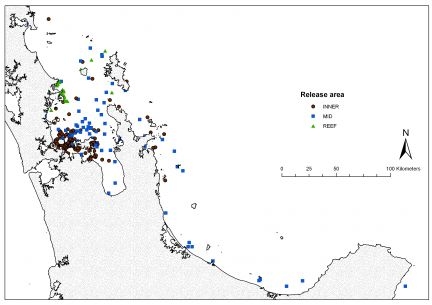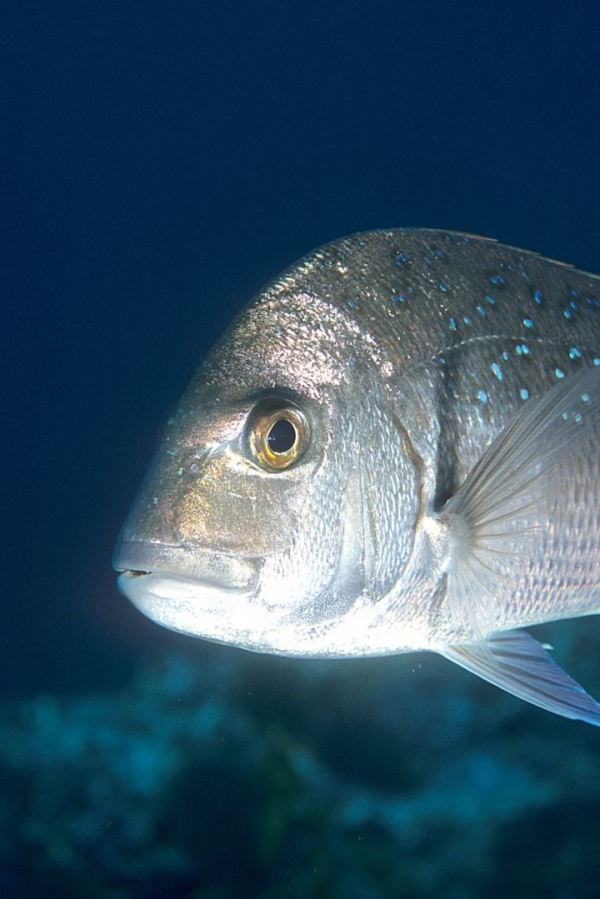NIWA studies reveal that different movement and behaviours exist within snapper stock – some snapper stay at home, while some range for hundreds of kilometres. Our studies also show that marine reserves may well be affecting the behaviour of fish that inhabit them.
This is “new and exciting science,” says NIWA fisheries scientist Dr Darren Parsons. “No other study has shown that reserves may affect the movement of the animal populations that inhabit them.”
During 2007-2008, NIWA marine scientists conducted major surveys using a range of tools and techniques to study the interactions between snapper, recreational fishing, and seafloor habitats.
Scientists from NIWA in Auckland used acoustic tags to monitor fish both inside and outside Leigh Marine Reserve.They found that the fish inside the reserve were more ‘residential’ than the fish outside the reserve.
Dr Parsons says, “the absence of fishing pressure inside the reserve may act as a selective force. Of the fish that settle inside the reserve, the individuals that range over the smallest areas have the lowest chance of leaving the reserve and therefore the lowest chance of being caught.”
Results of tagging snapper
Using longline vessels, NIWA also dart-tagged and released 10 000 snapper in both shallow reefy areas, and in deeper water, in the summer of 2006-07. Snapper were released throughout the inner Hauraki Gulf, and along areas of rocky reef off Kawau Island and Leigh.
To date, information has been received on 900 of these tagged fish.
The scientists found that snapper tagged in shallow reefy areas were far more residential, with most fish spending the vast majority of time within only a few hundred metres of where they were tagged. “In contrast,snapper from soft sediment areas – especially those further out in the Hauraki Gulf – move on a scale of tens of kilometres,” says Dr Parsons.
The largest voyage made by one of the tagged snapper was 400 km. It was recaptured near Gisborne.

The results from this significant study reveal that different movement behaviours exist within the same snapper stock. “We can predict movement behaviour from the location that the snapper was caught,’ says Dr Parsons.
The tagging results also show that higher percentages of tagged fish from rocky reef areas, close to the coast, were extracted each year. This was despite a much lower overall fishing effort in those areas.
“The population size or density of snapper in rocky reef areas is lower, so these areas maybe more prone to localised fishing effort, especially rocky reef areas near urban centres,” says Dr Parsons.
NIWA would like to thank the recreational fishers who assisted with this research by returning tags from tagged and recaptured snapper.
This research was funded by the Foundation for Research Science and Technology, plus the Department of Conservation.


